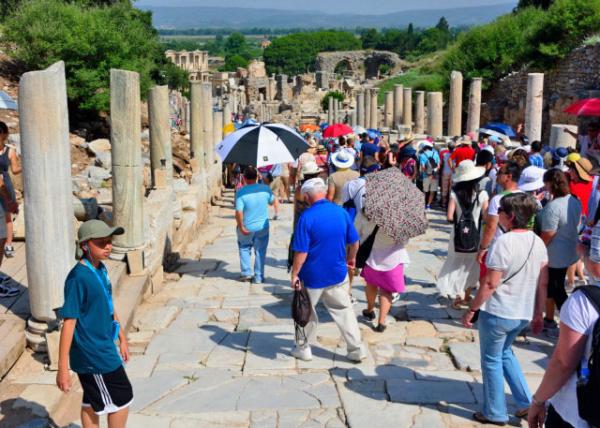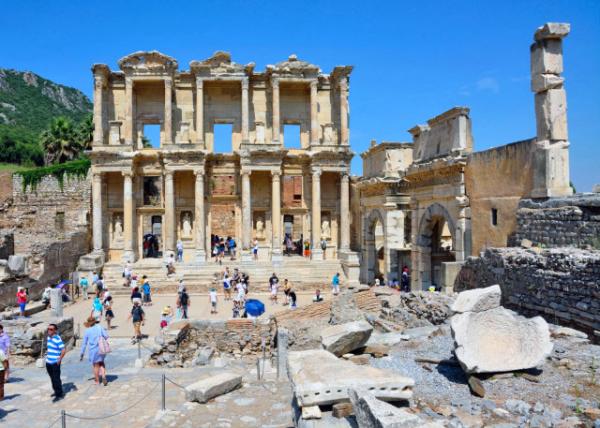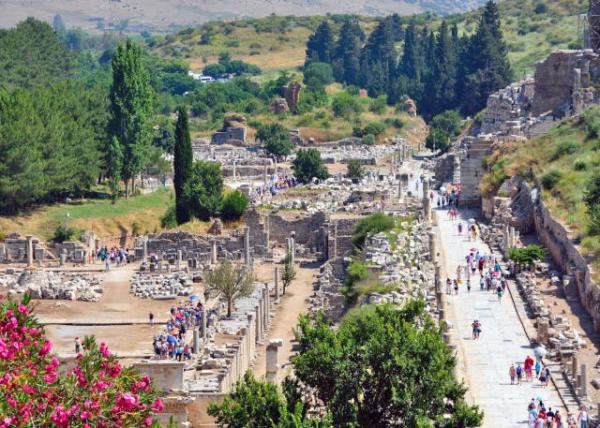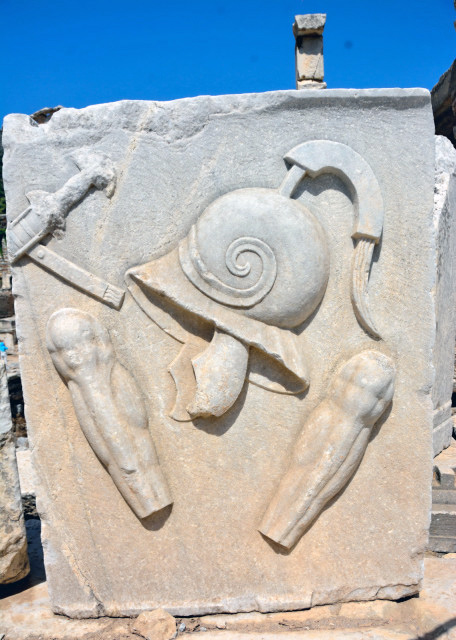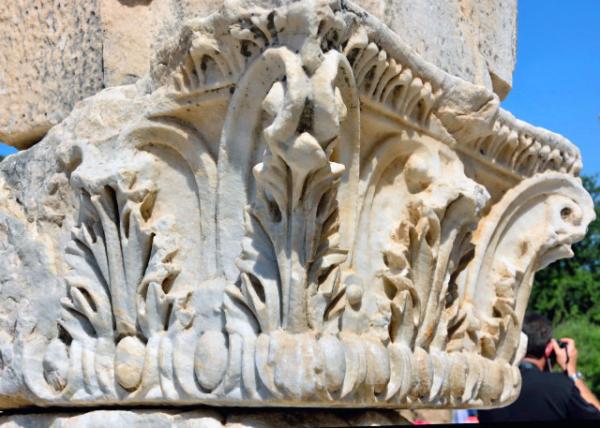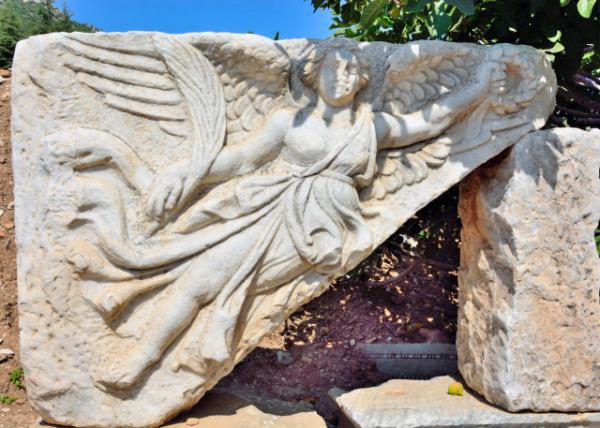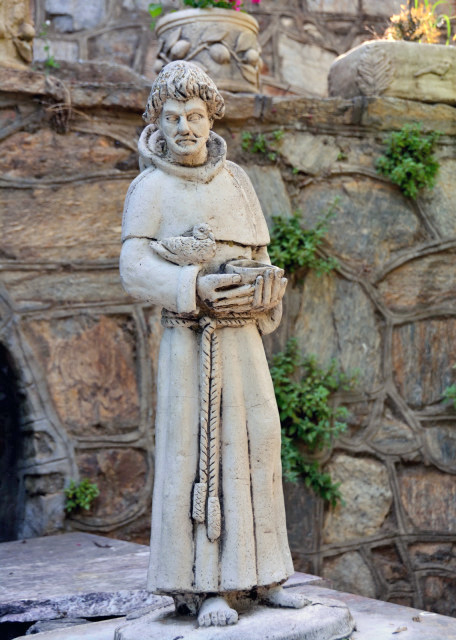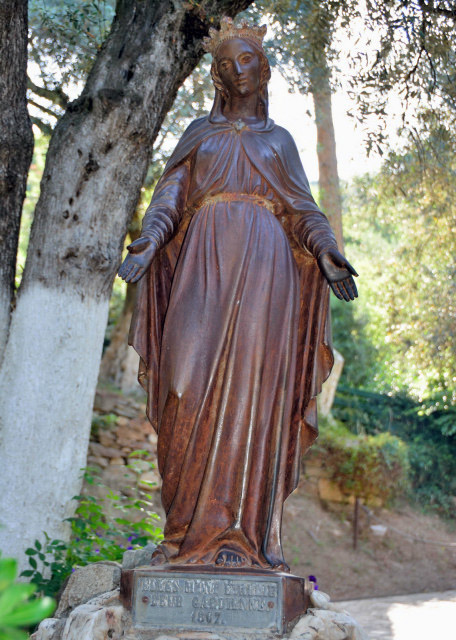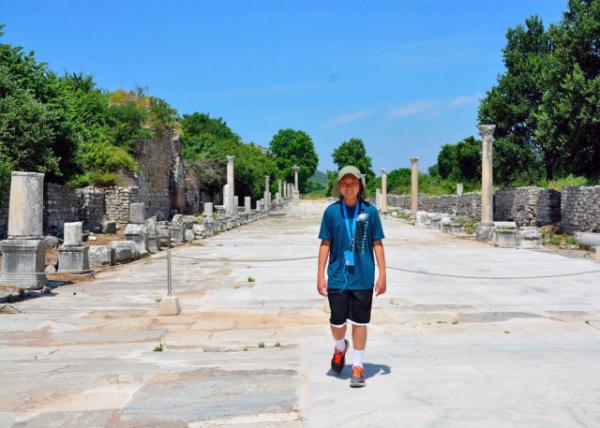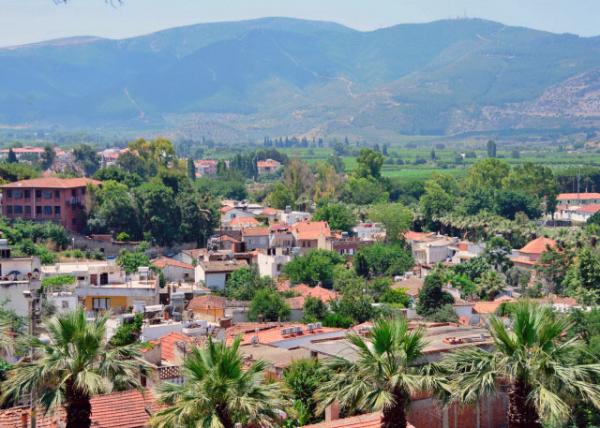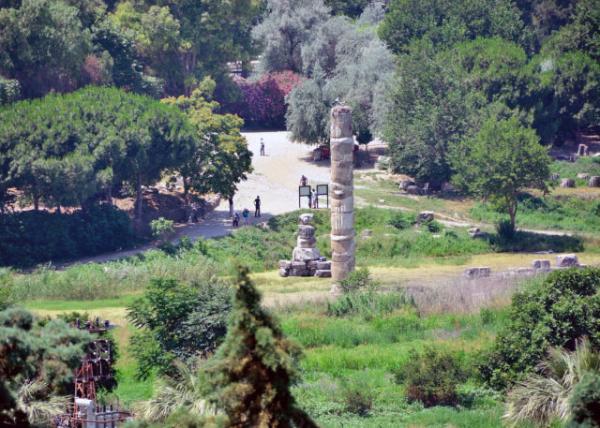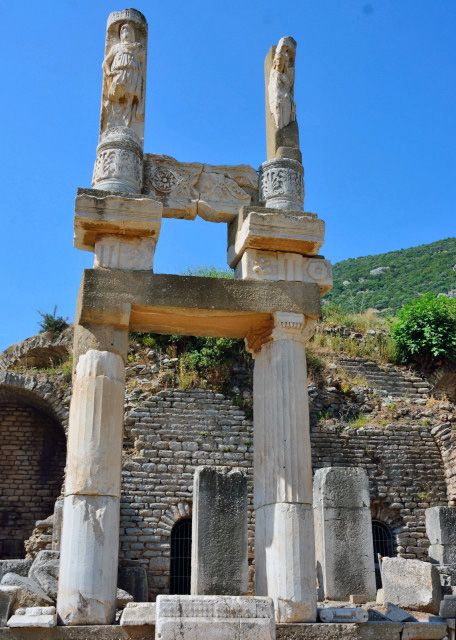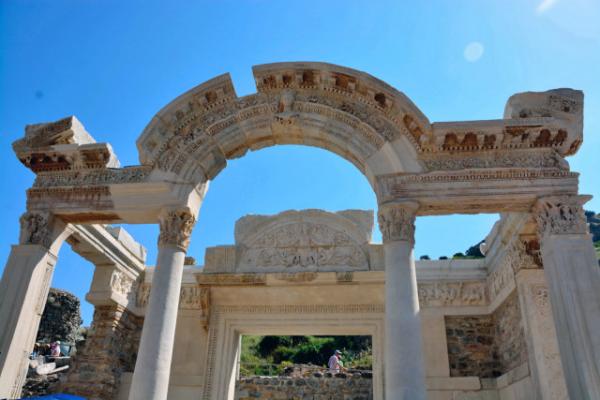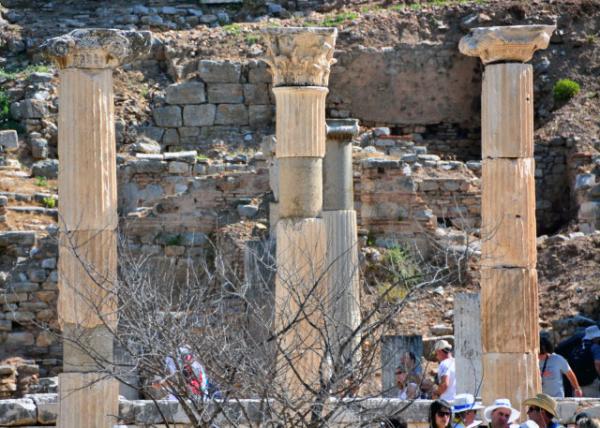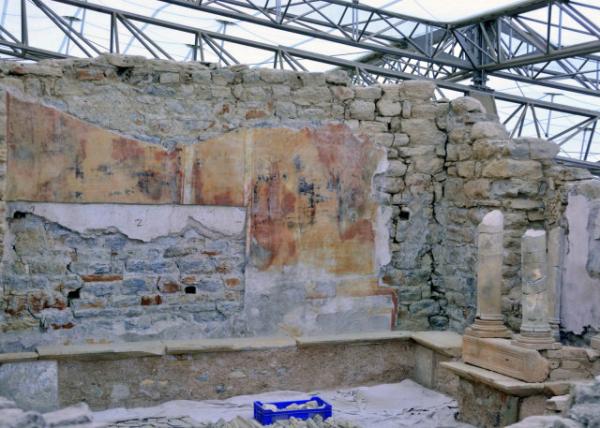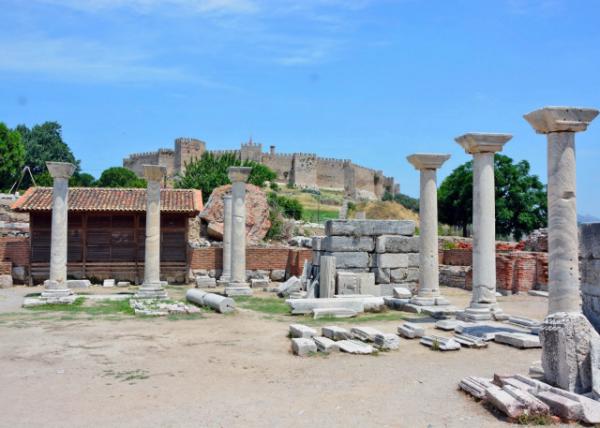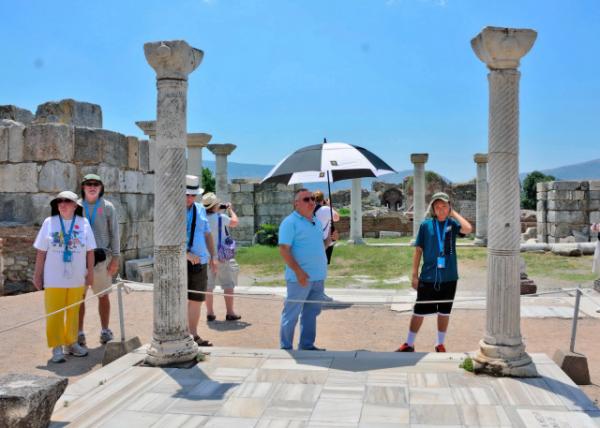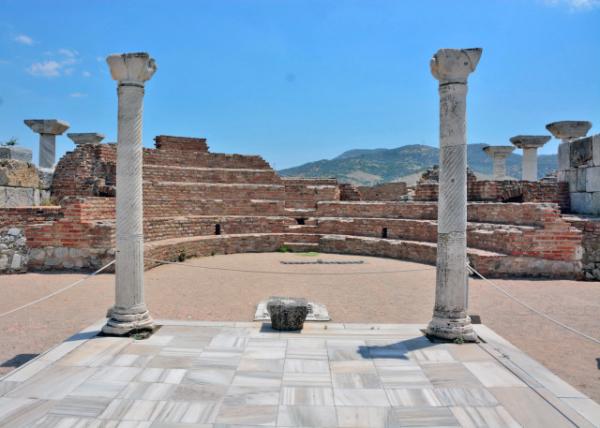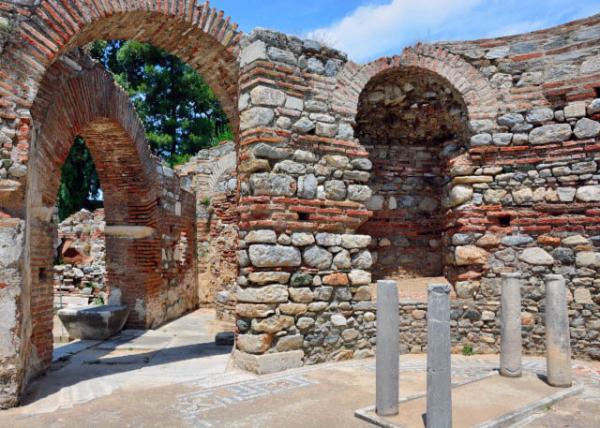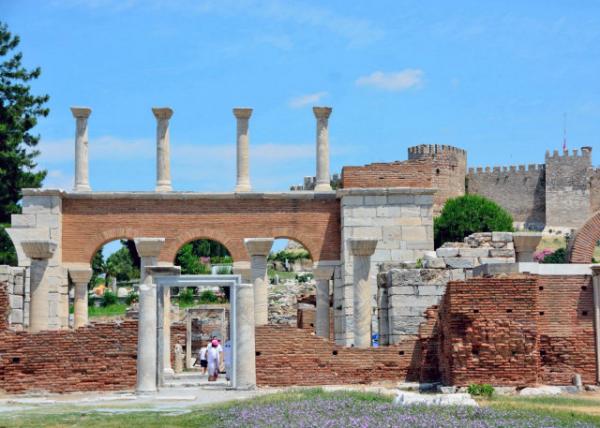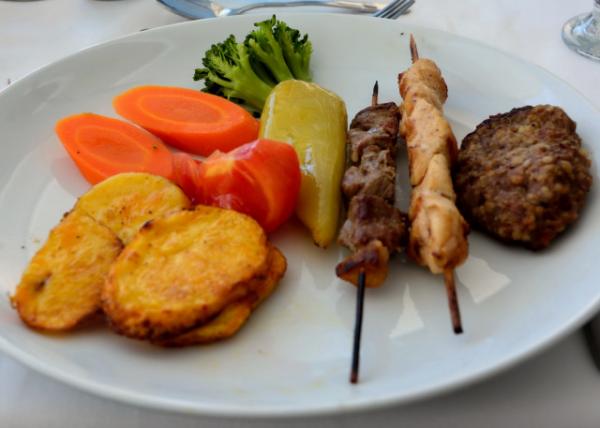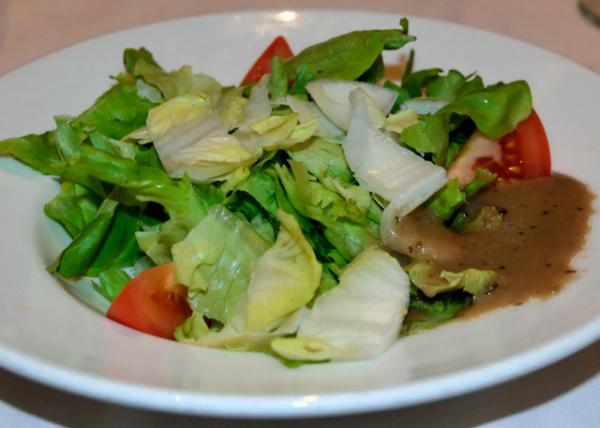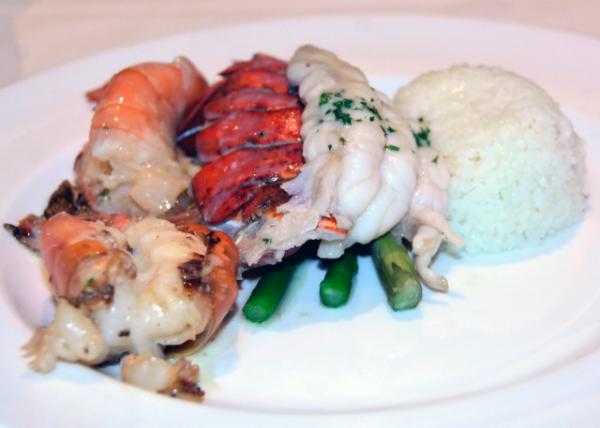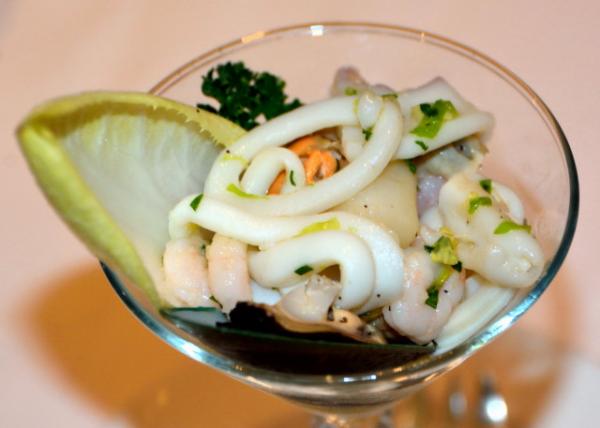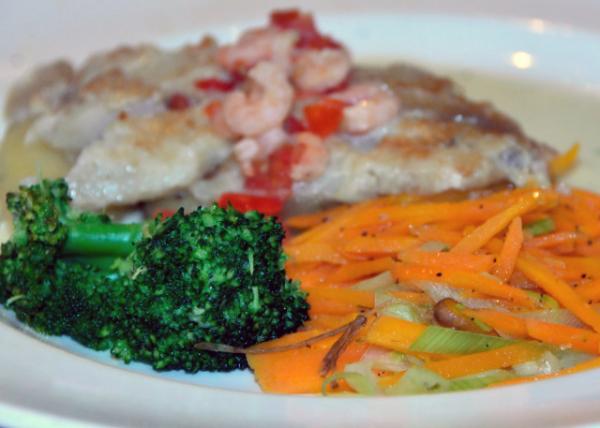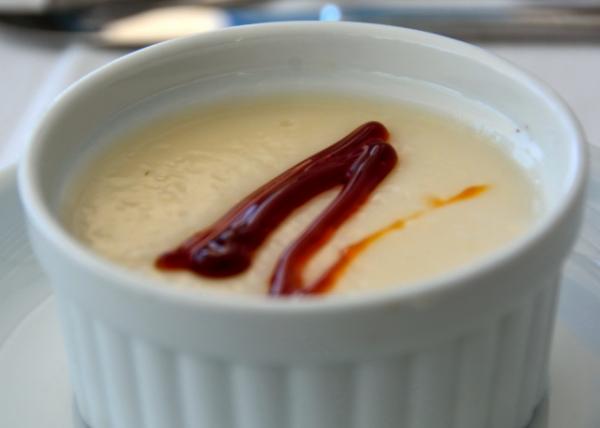| Ancient Ephesus, Turkey(土耳其古城以弗所) |
| 送交者: 天邊的紅霞 2020年04月27日08:58:08 於 [五 味 齋] 發送悄悄話 |
|
2015-06-18
【Aiden in English】 In ancient times, the city of Ephesus in Turkey stretched a total of 4.3 miles/7 kilometers, bustling more than 300,000 people. As a major trading post with the Middle East, its archaeological sites had rich in the Greek to the Roman history. There were some of the fascinating buildings of the time, for example, the ruined Temple of Artemis, the sacred House of Virgin Mary, and the great Basilica of St. John right up against the Aegean Sea. Now Ephesus isn’t a grand metropolis in contrast to one of the world’s largest jigsaw puzzles approximately 3,000 years ago. Ephesus was invaded at its greatest peak, for many reasons too. First of all, there was Christianity. It was changing the population’s ways of thinking, and having the House of Virgin Mary built a few miles away where Mary was brought here by the Apostle John after the Resurrection of Christ and lived out her days. It was quickly spreading like a wild fire. Word was fast to go around. The next reason was the nearby Cayster River that flew into the Aegean Sea. Ephesus was a hub of trade overseas. Going back to my 4th grade science kit, I’ve learned that a river carries bits of land with it, and also has the ability to plop it where it feels fit. The bits of land are made up of sand, rocks, and very fertile soil. The silt was dumped in the river mouth near the entrance to the Aegean Sea. More and more land came to fill here, forming a delta. It had marsh-like conditions, and the port that used to be connected to the sea now was on dry land. No ships in or out meant no trade. Back in a simpler time, no trade meant no wealth and no wealth meant no power. Finally, Ephesus was next to many conquering armies. Because it’s fertile, many thought that Ephesus was worth fighting a battle for. Ephesus host goddess was Artemis, the Greek goddess of the hunt. The Temple of Artemis was built in her honor and became the biggest architecture on earth in 800 BC. Unfortunately, it was destroyed by an invading army. It was a shame, since now it’s well-known as one of the 7 Wonders of the Ancient World. The place was ideal for a city, locating in a valley with a river nearby. Nevertheless, that wasn’t all. The architecture was top notch, fending off rain water and earthquakes. Ephesus had a large underground system of pipes, carrying out rain water. Brutal, lethal, melting, incinerating, piercing blazing, X-ray like sunshine here was around 90% of the year. For the other ten, however, well let’s just say not even the sky could hold its bladder forever. The pillars of the city needed the strength against earthquakes as well, since the area was sitting near the meeting of two continental plates between Europe and Africa. To give it protection, the metal clamps secured the pillar to the ground, and then molten lead was powered over it to solidify them. It was the technique that is used now, and we use concrete just instead of lead. The advancements didn’t just stop there. Ephesus demonstrated a sign of early recycling. When a block of marble ran out of use, it would be paved into the street. So as I walked down the road, I was probable standing on one of the most expensive pathways ever made in the world. Talk about beautification. For a city so old, the culture, technology, and architecture seem so new. Although the life of Ephesians was different from ours, time can’t change certain things for man. It never had and it never will. 【紅霞譯文】 從前,土耳其古城以弗所地域橫亙四英里多/七公里長,人口高達三十多萬,作為通往中東地區的貿易門戶,城邦建設濃重地沿襲了古希臘和古羅馬傳統,在愛琴海沿岸留下為數不少的名勝古蹟,譬如:阿爾忒彌斯神廟遺蹟、聖母瑪麗亞故居聖所、聖約翰大教堂神殿。 如今以弗所已不再是三千年前的繁華都會,昌盛期間由於種種原因一直深受外部勢力影響。首先在宗教上,基督教改變了人們的世界觀,聖母瑪麗亞故居就建在離市區僅有若干英里遠的地方,據說瑪麗亞在基督復活之後被耶穌十二門徒之一聖約翰帶到這裡直至魂歸天堂,消息如野火春風,很快傳遍世間各地。其次在地理上,基士特河流經以弗所附近匯入愛琴海,以弗所因此正好成為海運交通樞紐。早在小學四年級科普教育時就已提到,河水流動會帶走陸生雜質,而這些由泥沙、碎石及沃土組成的陸生雜質沿河床隨處沉積,愛琴海入海口處淤泥四溢,逐漸形成三角洲,出現類似沼澤一樣的鹽鹼地。連接海灣的港口被陸地取代,船隻無法行駛,海上貿易失去運作功能。回到古代那會兒,如果失去對外貿易交流,那麼無異於掐斷了本地經濟命脈;倘若沒有錢財收入,勢必導致權力喪失。最後在政治上,以弗所屢經血火洗禮,因土地富饒而深陷戰爭泥潭。 以弗所的保護神是阿爾忒彌斯,即希臘神話中的狩獵女神。阿爾忒彌斯神廟是以弗所人為祭祀狩獵女神而建,號稱公元前八百年間全球最雄偉的建築,不幸的是它毀於戰亂,真是奇天大恥,因為阿爾忒彌斯神廟算得上古代世界七大奇蹟之一。這一帶風水寶地,山谷間河流旁尤其適於建造城邦,然而除了自然優勢之外,神廟在建築水平上實屬一流,既防水又抗震,並且地下設有管道系統,可以排放雨水。這裡一年四季90%日子裡陽光歹毒致命燒心焦化火燎,如同X線穿透力強,剩下的10%則大雨滂沱,連老天爺都自慚形穢。以弗所石柱需要經得起地震考驗,因為其所在地恰巧處在歐非大陸板塊之間,為了增強穩定性,使用金屬鉗子才能將石柱牢牢固定在地基上,然後再澆築溶化的鉛液來提高防腐功效,直到今天我們仍在沿用這種技術,只不過改用鋼筋混凝土而已。先進的創舉絕非局限到此,以弗所還萌發回收想法,報廢的大理石被拿來鋪墊通道,所以當我漫步其上,沒準正踩在迄今為止世界上最昂貴的馬路,暫且不談令人腳下生風的美感。 雖說以弗所是個古老的城邦,但無論在文化技術還是建築工藝上都發展得相當前沿,那時人們的生活肯定跟現在有所不同,時代造就英雄,這是永遠無法改變的事實,以前不會,將來恐怕也不可能。 |
|
|
|
|
 |
 |
| 實用資訊 | |
|
|
|
|
| 一周點擊熱帖 | 更多>> |
|
|
|
| 一周回復熱帖 |
|
|
|
|
| 歷史上的今天:回復熱帖 |
| 2019: | 第三隻眼睛看一帶一路 | |
| 2019: | 首頁劉強東一地雞毛的文章,證明我當時 | |
| 2018: | 醒獅| 契約精神vs小聰明 | |
| 2018: | 毛粉團北韓出車禍,家屬咋一聲沒吭尼? | |
| 2017: | 秋念11:西化,將是中華民族最深重的災 | |
| 2017: | 專家們評估川普新稅收計劃(譯文) | |
| 2016: | 隨着床鋪不斷接近黨內提名,媒體也似乎 | |
| 2016: | BBC: 吳弘達遇意外去世終年79歲 | |
| 2015: | 看了阿巫下面貼的那條假新聞,想起微信 | |
| 2015: | 哈哈。這些上海丐幫車模倒是挺可愛的。 | |




